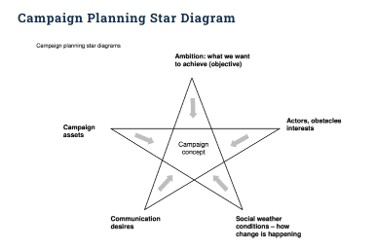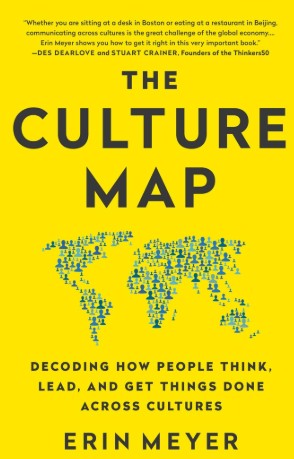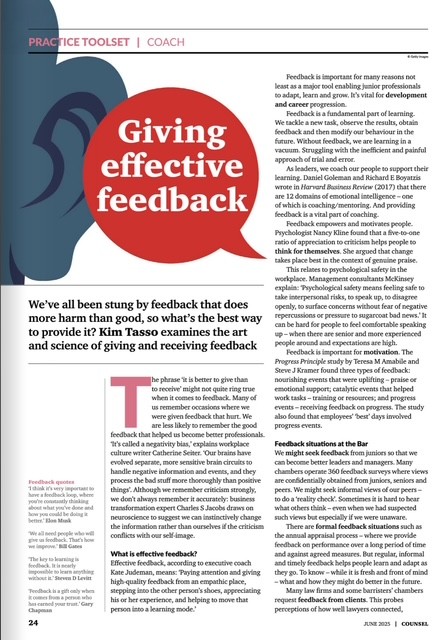
“A team is not a group of people who work together, it is a group of people who trust each other” (Simon Sinek). As social creatures, you’d think that if you put us together in a group we would all just get on, share our thoughts and tackle the task at hand. But that isn’t what always happens in reality. When people are put together there will be all sorts of factors at play that can make the group dynamics tricky. Some people will say too much and dominate the conversation whilst others may not say anything at all. There may be different views which remain below the surface so that there are awkward silences or it may erupt into an argument and conflict. People may hijack the debate and take the discussion off on tangents. Facilitating is a core skill of leadership. So here are some tips on how to facilitate groups:
Have aims and an agenda
Group meetings are used in so many contexts: team cohesion, work allocation, staff consultation, internal communication, training workshops, project management, away days, client focus groups, steering groups and change management. And Managing Committees and Boards are essentially a regular group meeting.
Be clear about what the group must achieve. This means that you need aims and an agenda. The agenda needs to make sure that all the relevant points are explored – with adequate time allocated for each topic. You might need to consult members of the group in advance on what should appear on the agenda and who should lead on each topic. You might also indicate what you want to achieve with each topic – for example, share information, generate ideas, make a decision, review progress, dismiss projects or agree action.
People need to see the agenda – and any supporting briefing papers – in advance so that they can prepare themselves. You might offer them the opportunity to raise any questions or issues with you in advance – as the facilitator – rather than doing so themselves during the meeting.
Do your research
Think about the people who are participating in the group discussion. Do they know each other? Do they have similar roles? Is there a mix of seniority? How different are their personalities? Are they all from the same cultural group? http://kimtasso.com/cross-cultural-communication/
If there is time, it will help to speak in advance to as many people attending the meeting as possible. If people work virtually, it is good practice to call them all up in advance to get to know them a bit beforehand http://kimtasso.com/managing-teams-and-virtual-teams/.
By gaining rapport, trust and insight into the attendees in advance you will be better prepared to raise relevant issues and deal with the discussions that ensue. For more on developing trust with people see http://kimtasso.com/trust-better-business-relationships/
Check the environment
Think about the seating plan and whether you will allow people to choose where to sit.
Consider whether it is necessary to have a table and if it creates a barrier between people. Many creative group discussions – such as with design thinking – use more space and movement, unusual props and offer more relaxed seating (the beanbags!). While these things can signal a different sort of interaction it may make some people feel uncomfortable at first.
There’s some great work by Nancy Kline in her book “Time to Think” on creating an appreciative environment that encourages creativity and participation.
Start the session with the rules of engagement
It’s a good idea to start the session with a brief reminder of the aims or purpose of the group discussion. And the time that is available.
Set out the rules of engagement at the outset. Tackle common issues such as the use of mobile phones and laptops. Ideally, if you want people to be fully present and engaged it is best to avoid the use of digital devices.
Explain that people may express different or even negative views but it is the ideas rather than the people that should be addressed. Encourage people to suggest solutions if they raise a problem.
Be clear if you intend for minutes to be taken – and by whom – and whether the discussion is confidential. Chatham House rules means that points are noted – but not who made them.
You may find it helpful to have tools to help you document key points as the discussion progresses – for example, a flipchart or a smart screen. It can help interaction if you have things for people to do – for example, writing on yellow sticky notes or cards or working together on mind maps.
You should encourage everyone to introduce themselves and their roles. If the participants have not met before you might try some form of ice-breaker exercise.
Manage the interaction
As facilitator, you should adopt a neutral position on issues. However, you should aim to draw out different or opposing views from the participants and ultimately find consensus.
You might explain that you are aware that there are differing views on an issue and provide a brief overview of the pros and cons before asking individuals to elaborate on them to help everyone see the different perspectives.
Encourage people to listen respectfully to each other and allow each other to finish rather than interrupting. You may need to be creative in how you make interventions when these guidelines are breached.
People want to be heard and appreciated. Allow people to express their views and thank them for their opinions – even if they contradict those of others in the group. Active listening skills will be required by the facilitator. Validation – where you acknowledge people’s feelings – is important if you want people to remain engaged. Encourage people to voice their views and thank them when they share their thoughts.
If some people don’t appear to contribute, use different ways to prompt them to participate, for example:
“What are your thoughts Emily?”
“Simon – to what extent do you feel the same way as Peter?”
“Do you have anything to add James?”
“What else should we consider Eleanor?”
“Have we missed any important points Jack?”
Where you detect conflict, reassure people that it is OK to have different views and encourage them to describe the reasons for their views. You may need to take note of or “park” any particularly difficult issues to address outside the meeting. Try to keep things factual and evidence-based rather than personal and emotional.
Unite the group
Naturally there will be differences of opinion. There may even be entrenched positions and political undertones. But as facilitator you need to remind everyone of your common goals – perhaps “chunking up” to where you have a shared vision before acknowledging where there are differences. This might involve an appeal to the firm or team’s common aims and competitors or to shared values about excellence or putting the client first.
Maintain energy levels
Watch the non-verbal communication http://kimtasso.com/faq/how-can-non-verbal-communication-body-language-improve-my-marketing-and-personal-effectiveness/ of the participants but note that this may be difficult if you have a culturally-diverse group.
Look regularly to see who appears to be engaged and attentive and who appears to have “switched off”. Notice if anyone looks like they want to contribute or ask a question. Maintain eye contact with all members of the group periodically.
Be prepared for occasions when the energy level dips and have exercises, questions or activities prepared to get things moving again.
It might be helpful to offer a short break during the session – if people need time to reflect or cool down from a challenging topic.
Break into smaller groups
Be aware if there are pre-existing alliances or coalitions within the group as you don’t want things moving towards an in-group vs. out-group situation. And be wary of triangulations – a manipulation tactic where one person will not communicate directly with another person, instead using a third person to relay communication to the second or engineer rivalry between two people (divide and conquer or playing one person against another).
Sometimes it is helpful to break a large group into smaller groups. Some facilitators will suggest tasks are tackled first by dyads or triads and ask those groups to nominate someone to report back the views of the smaller group. This is a useful approach where there is a mix of seniority in the group as it may encourage those who are more nervous about opening up to express their views to a smaller audience.
Close the session
Be aware of the time allocated for discussion and whether you are allocating sufficient time to each agenda item.
At the end of each topic you should check back on the main points agreed and any actions before moving on.
It may be necessary to take votes on issues – if so, be clear on the process and whether you have a vote and what happens if there is a tie.
Towards the end of the session you should provide a little time for outstanding questions or any other points that the participants wish to raise.
Try to end on a positive and upbeat note. Remind everyone of what has been achieved.
At the end of the session you should provide a brief summary of the main points discussed, thank everyone for their contribution and explain the next steps.
See also:
Chairing conferences http://kimtasso.com/7-tips-to-being-a-great-conference-chair/
Effective meetings http://kimtasso.com/making-the-most-of-meetings/
Team meetings http://kimtasso.com/emotional-contagion-delegation-coaching-team-meetings/
Facilitating lunches and dinners http://kimtasso.com/facilitating-the-perfect-lunch-or-dinner-discussion/
Internal communication http://kimtasso.com/internal-communication-why-how-and-what/
Speaking up at meetings http://kimtasso.com/20-ideas-to-improve-impact-assertiveness-and-effectiveness-for-marketing-and-bd-assistants-and-executives/
Sales meetings http://kimtasso.com/fabulous-first-meetings-16-selling-insights/









